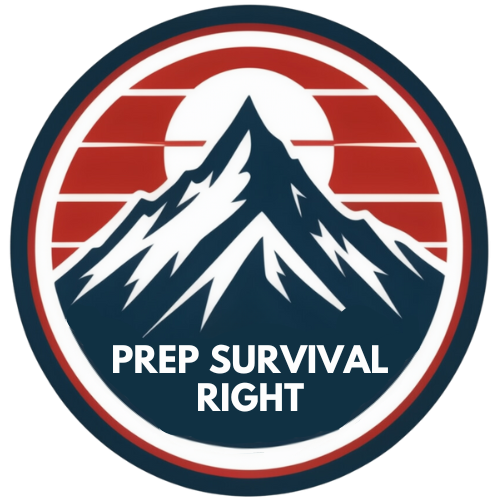Hurricane Preparedness: Your Comprehensive Guide
In the face of increasingly severe hurricane seasons, the importance of thorough preparedness cannot be overstated. By integrating a strong emergency plan, understanding evacuation zones, and staying informed through reliable channels, individuals can greatly reduce the risks associated with these powerful storms. This guide will walk you through essential steps, from crafting a personalized emergency plan to ensuring your emergency supplies are up to date. Are you equipped with the knowledge needed to protect your home and loved ones when the next hurricane strikes? Discover strategies that could make all the difference.
Know Your Hurricane Risk
Understanding your hurricane risk is essential, as hurricanes frequently result in significant hazards, including flooding, high winds, and storm surges, even far inland from the initial point of landfall.
Analyzing historical data and geographic information can help ascertain vulnerability levels. For instance, the National Oceanic and Atmospheric Administration (NOAA) provides hurricane tracking models detailing potential impact zones. Factors such as topography, population density, and building infrastructure influence risk severity.
Coastal areas are particularly susceptible, but inland regions can experience catastrophic flooding due to heavy rainfall. Utilizing Geographic Information Systems (GIS) and historical hurricane data can refine risk assessments, aiding in preparedness.
Accurate risk identification is vital for implementing effective mitigation strategies and ensuring community resilience.
Make an Emergency Plan
Developing a thorough emergency plan is crucial for guaranteeing that all household members are well-prepared and know their roles and responsibilities during a hurricane.
Start by conducting a risk assessment to identify potential hazards specific to your location.
Establish a communication strategy incorporating multiple channels (e.g., SMS, social media, emergency contact numbers).
Designate safe meeting points and ensure familiarity with emergency exits and routes within the home.
Compile a detailed inventory of emergency supplies, including non-perishable food, water, first aid kits, and medications.
Regularly update and practice your plan through drills to enhance situational awareness and response efficacy.
Utilize data-driven tools and resources from FEMA and NOAA for real-time updates and guidance.
Understand Evacuation Zones

After establishing a detailed emergency plan, it is essential to identify and understand your specific evacuation zone to guarantee timely and safe evacuation during a hurricane. Local authorities typically designate evacuation zones based on geographic vulnerability to storm surge and flooding.
Utilize official resources, such as county websites and FEMA's interactive maps, to ascertain your zone. Precise knowledge of these zones allows for data-driven decision-making regarding evacuation timing and routes.
Practice evacuation drills with household members and pets to ensure efficiency. Identify multiple evacuation routes and nearby shelters, considering potential road closures and traffic conditions.
Accurate zone identification can greatly reduce life-threatening risks and enhance overall preparedness during a hurricane event.
Stay Informed During Hurricanes
Continuous access to dependable emergency information and alerts is essential for making informed decisions during hurricanes. Utilize multiple reliable sources such as the FEMA app, National Weather Service (NWS) alerts, Emergency Alert System (EAS), and Wireless Emergency Alerts (WEA). These platforms provide real-time data on hurricane trajectories, wind speeds, and potential flooding.
Maintaining updated information enables timely actions, including evacuation if mandated. Scientific accuracy in meteorological data and predictive models can greatly reduce risks. Subscribing to community alert systems and following local emergency management instructions guarantees that the latest safety measures and recommendations are adhered to.
Consistent monitoring of these channels is vital for safeguarding life and property during hurricane events.
Safe Practices During Hurricanes

Ensuring safety during hurricanes necessitates adherence to scientifically-backed guidelines and protocols to mitigate risks from high winds, flooding, and other associated hazards. Stay informed through reliable sources such as the National Weather Service and FEMA, ensuring constant access to alerts.
If evacuation orders are issued, comply immediately to avoid life-threatening conditions. Sheltering in place requires choosing an interior room or designated storm shelter, away from windows and exterior walls. Avoid floodwaters at all costs due to potential contamination and hidden dangers.
Utilize NOAA weather radios for updates and maintain a battery-powered backup. These practices, grounded in empirical data, are essential for minimizing harm and ensuring survival during hurricane events.
Returning Home Safely
Following the storm's passage, adherence to safety protocols is vital when re-entering affected areas to mitigate post-hurricane risks and guarantee a secure return home. Initial steps include awaiting clearance from local authorities to confirm structural safety and avoiding compromised infrastructure.
Wear protective clothing and N95 respirators to minimize exposure to mold and airborne contaminants. Electrical safety is essential; avoid contact with wet electrical equipment and report gas leaks immediately. Floodwaters should be strictly avoided due to the risk of pathogens, debris, and electrocution hazards.
Utilize text messaging and social media for non-emergency communications to conserve bandwidth for critical communications. Detailed documentation of damages for insurance claims is recommended, facilitating effective recovery and rebuilding efforts.
Emergency Supplies Checklist

Creating a thorough emergency supplies checklist is crucial for guaranteeing preparedness and resilience during hurricane events. Critical supplies include a minimum of three days' worth of non-perishable food and water, calculated at one gallon per person per day. Guarantee an adequate stockpile of prescription medications and medical supplies. Include a first-aid kit, battery-powered or hand-crank radio, and extra batteries.
Flashlights, multi-purpose tools, and hygiene products are also essential. Keep important documents in waterproof containers. Consider specific needs such as infant formula, pet supplies, and assistive devices for individuals with disabilities. Maintain a portable charger for electronic devices. Regularly update and verify the functionality of all items to adapt to evolving guidelines and personal circumstances.
Conclusion
To summarize, thorough hurricane preparedness requires a rigorous risk assessment, formulation of a detailed emergency plan, and thorough understanding of evacuation zones.
Adherence to scientifically-backed guidelines and maintaining up-to-date information from reliable sources are crucial.
Practicing safe evacuation procedures and ensuring the availability of essential emergency supplies greatly mitigate hurricane impact.
Systematic and informed preparedness measures guarantee safety and readiness in the event of severe storms, thereby safeguarding lives and property effectively.

